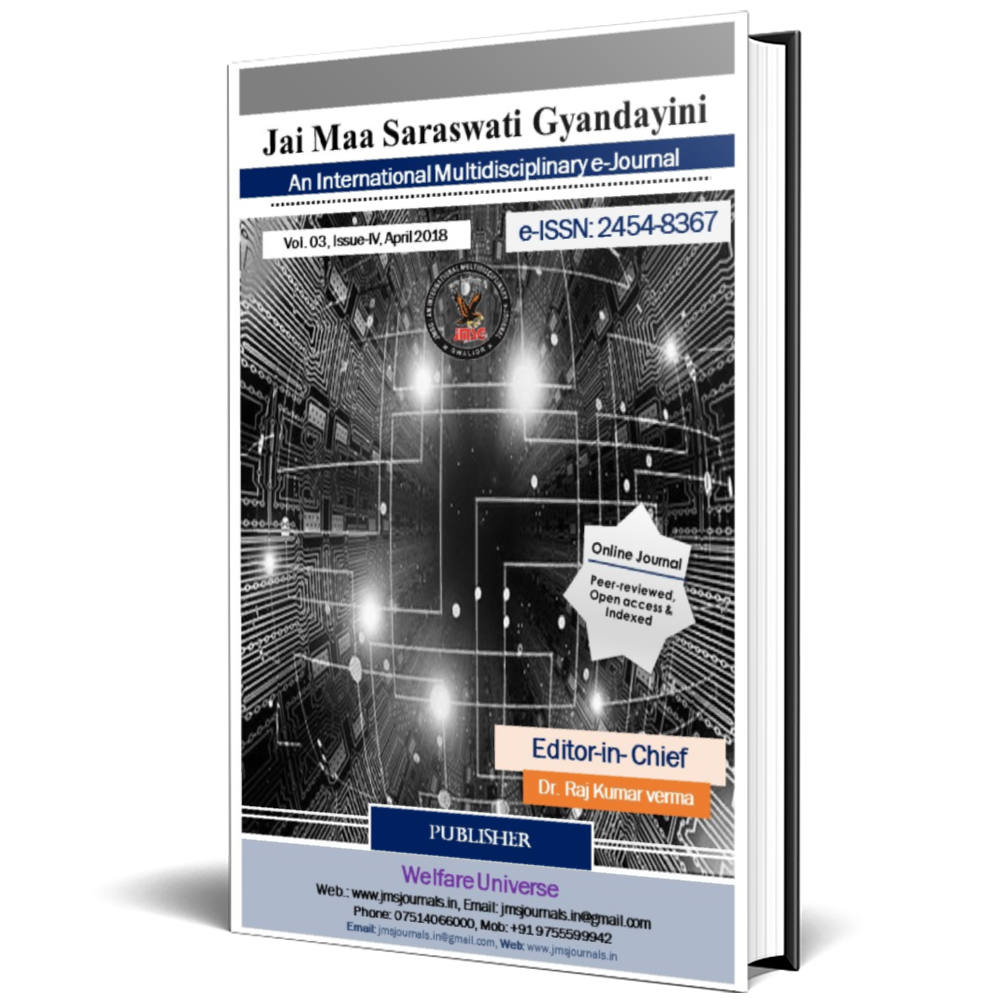Shung kalin Kala Evam Sahitya Me Suryoupasna: Ek Addhyan
Keywords:
ancient times, source of energy, Sun Worship in Shunga PeriodAbstract
Since the very ancient times, the Sun has been regarded as the source of energy. Along with providing heat and light, the Sun has illuminated the entire world with its astonishing brilliance, power, and radiance. In other words, it is the Sun alone that destroys darkness and enlightens the whole universe. The Sun is the presiding force over day and night — that is, when the Sun rises, it is day, and when it sets, it becomes night. The Sun is also the producer and sustainer of flowers, fruits, and various food grains.
People in ancient times were aware not only of the Sun’s natural attributes but also of its medicinal and health-promoting qualities. Therefore, to express gratitude toward the Sun, they envisioned divinity within it, and the practice of Suryopasana (Sun worship) began. Underlying this practice was, in all likelihood, a profound sense of reverence and a desire to preserve the Sun’s beneficence.
Metrics
References
Jhalkar, V.C., An Introduction to Ancient Indian Art, Allahabad, 1972, pp. 23–30.
Dubey, B.M., Gaya and Bodh Gaya, Lucknow, 1934, p. 84, Fig. 42.
Kaula, S.C., Terracotta Figurines from Kosambi, Allahabad, 1950, p. 35, Plate XXI.
Jayaswal, D.P., J.N. Banerji, Indian Archaeology, Vol. II, 1935, Plate XXX-2.
Das, Gurudutta, C.C., Origin and Evolution of Indian Sculpture, Lucknow, 1961, p. 152, Fig. 75.
Jhalkar, S.D., Terracotta Art in Northern India, Delhi, 1996, p. 101.
Indian Archaeology Review, 1964–65, p. 7, Plate VIII-D.
Kaula, S.C., Mithila Art, Allahabad, 1970, p. 28; Indian Archaeology Review, 1955–56, Vol. LXXII.
Jhalkar, M.L., Indian Art Tradition, Allahabad, 1997, p. 24.
Jhalkar, M.L., Indian Art Heritage, Allahabad, 2001, p. 68.
Allen, J., Catalogue of the Coins of the Indian Museum, London, 1936, p. 147.
Gupta, P.L., Ancient Coins of India, Delhi, 1969, p. 195.
Jhalkar, V.C., The Religious Studies of Simple and Unwritten Coins, pp. 133–136.
Manusmriti 1/65, with commentary by Pandit Harigovind Shastri, first edition, Varanasi, Samvat 2063 (2007 CE).
Manusmriti 5/95.
Mahabharata 6.04.12.
Rigveda 5.03.55, p. 452; 4.02.24.
Agrawal, Vasudev Sharan, Art and Culture: An Archaeological Study, Varanasi, 1963, p. 311 (Art and Culture 261, 1–8).
Varnashrama Dharma, from Art and Culture 261, 1–8.
Vishnu Purana 67, 2–3 (“Jivah Karyaḥ Sūryaḥ Saṃhṛtaḥ Sunuḥ Jātah Prabhāḥ…”).
Ramayana 1.35.8–9.
Mithrabheda, in Mahabharata, edited by Shukdev, Indian Society in Ancient India, Allahabad, 3rd Edition, 2010, p. 307.
Mahopanishad 83/9.
Maitrayaniya Upanishad 120/54, also p. 307.
Thakur, Janeshwar Dayal, Family Questions (Manuscripts), 2nd Edition, 2000, pp. 477–478.
Mahabharata 7.82.16; 3.3.60.
Mahabharata 2.2.2.2.29.
Mahabharata 3.300.99; 13.96.20; Ramayana 6.105.31.
Mahabharata 3.3.33; 3.329; p. 42.
Downloads
Published
How to Cite
Issue
Section
License

This work is licensed under a Creative Commons Attribution-NonCommercial 4.0 International License.









